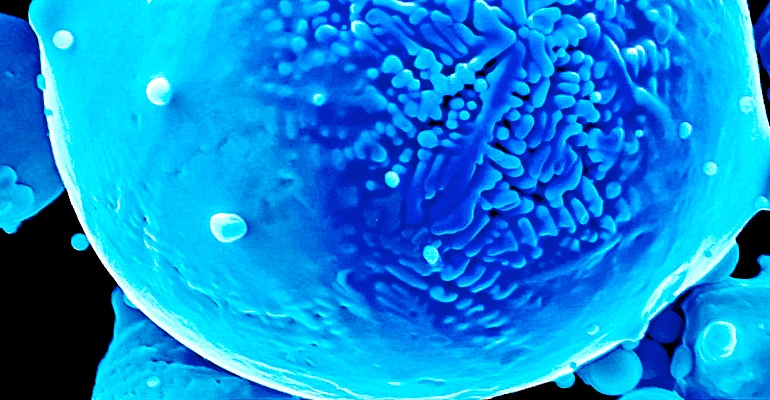Process Invented for 'Flawless' Metal 3D Printing
Researchers at Texas A&M identify alloy chemistries and machine parameters to create defect-free 3D-printed parts.
November 12, 2021

While metal additive manufacturing has come a long way in the last years, it still is a challenge to create parts without deformities, particularly as new and diverse materials are used in the process.
To remedy this problem, researchers at Texas A&M University have combined machine learning and single-track 3D printing to identify the proper metal alloy chemistries and print parameters to fabricate parts with uniform properties, free from defects, they said.
The team worked with a common metal 3D-printing process called laser powder bed fusion, and focused on the specific chemistry of the metals used in relation to laser speed and power, said Raiyan Seede, a doctoral student in the university’s Department of Materials Science and Engineering.
The work builds upon previous research by the team to eliminate pores in 3D-metal parts, which is one of the reasons deformities exist in the final product, he said.
“Our original challenge was making sure there are no pores in the printed parts because that’s the obvious killer for creating objects with enhanced mechanical properties,” Seede explained in a press statement.
The current study goes further to “take deep dives into fine-tuning the microstructure of alloys so that there is more control over the properties of the final printed object at a much finer scale than before,” he said.
Identifying the Problem
Like other 3D-printing processes, powder bed fusion also builds 3D metal parts layer by layer, with the layers being heated by a laser and then cooling at different times throughout the process.
Printing complex parts requires the use of alloy metal powders that combine different metals, such as nickel, aluminum, and magnesium, and at different concentrations, researchers said. When the alloys cool during the printing process, they tend to solidify at different rates because of their diversity, which can cause microscopic flaws called microsegregation, Seede explained.
“When the alloy powder cools, the individual metals can precipitate out,” he said in a press statement.
He compared the process to pouring salt into water. “It dissolves right away when the amount of salt is small, but as you pour more salt, the excess salt particles that do not dissolve start precipitating out as crystals,” Seede explained. “In essence, that’s what is happening in our metal alloys when they cool quickly after printing.”
Since these inconsistencies in the finished object compromise its mechanical properties, researchers have been trying to find ways to solve this problem. For this project, the Texas A&M team investigated the solidification of four alloys containing nickel and one other metal ingredient, Seede said.
Creating a Solution
Specifically, the team studied the phases of the alloy at different temperatures, creating phase diagrams to determine the chemical composition of the alloy that would lead to minimum microsegregation during printing.
They then melted a single track of the alloy metal powder for different laser settings and identified parameters that would create parts without pores, Seede said. After, the team combined the information from both of these steps to decide which laser settings and nickel alloy compositions would yield objects without microsegregation, he said.
In a final step, the team trained machine-learning models to identify patterns in their data to develop an equation for microsegregation applicable to any other alloy. This equation is aimed at predicting the extent of segregation based on several parameters: solidification range, material properties, and laser power and speed, Seede said.
Researchers published a paper on their work in the journal Additive Manufacturing.
The team’s work should make it easier to mix alloys in additive manufacturing to create complex parts without defects, even at the microscale, noted Professor Ibrahim Karaman, head of Texas A&M’s Materials Science and Engineering Department.
This will support its use in industries such as aerospace, automotive, and defense “that are constantly looking for better ways to build custom metal parts,” he said.
Elizabeth Montalbano is a freelance writer who has written about technology and culture for more than 20 years. She has lived and worked as a professional journalist in Phoenix, San Francisco and New York City. In her free time she enjoys surfing, traveling, music, yoga and cooking. She currently resides in a village on the southwest coast of Portugal.
About the Author(s)
You May Also Like



